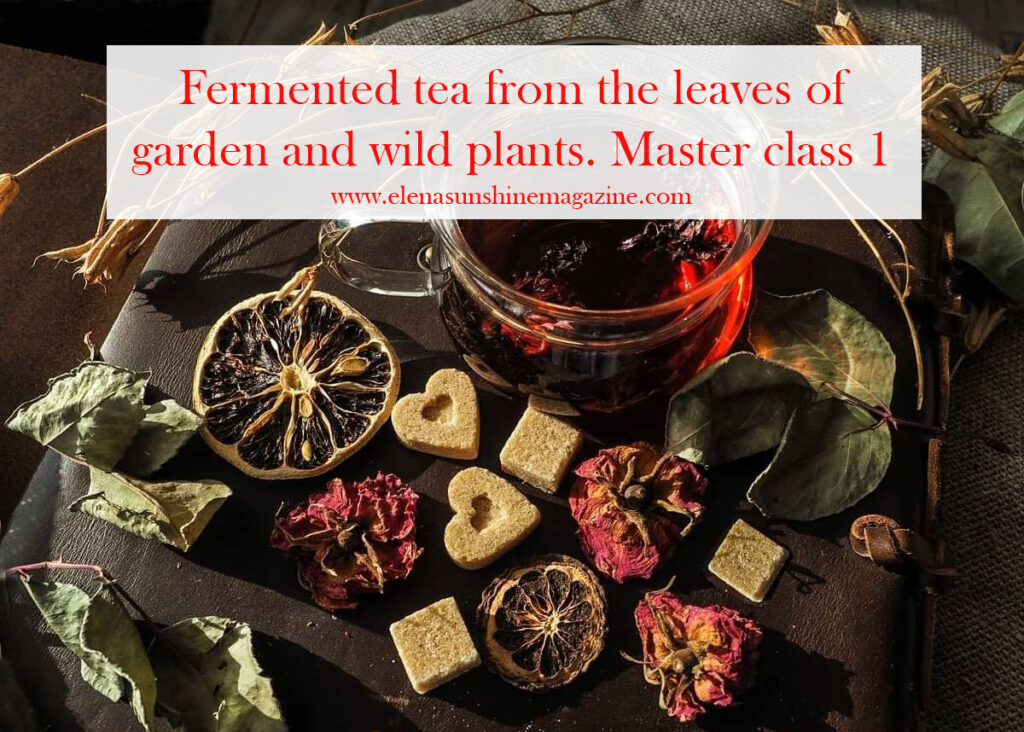Fermentation of leaves consists in the transfer of insoluble (non-extractable) substances of leaf tissue into soluble and easily digestible. In order for the fermentation process to begin, you must first destroy the structure of the leaf before the juice is released. Bacteria, which are abundant on the surface of the leaf and in the air, actively contribute to the fermentation process. Fermented tea from the leaves of garden and wild plants.
Fermentation of the leaves allows you to make a very tasty, fragrant and rich in color drink.
The main principles when choosing plants for tea are:
1. The presence of tannins in the leaves. If there are no tannins in the leaves, then the tea will turn out to be tasteless. Therefore, when choosing a plant for making tea, you should familiarize yourself with the chemical composition of plant leaves. The young leaves are the most rich in tannin. There are more of them in the tender raw materials. In the coarsened leaf, the reserves of tannins are sharply reduced.
2. We prepare tea from those plants whose fruits we enjoy eating – apple trees, strawberries, cherries, blackberries, raspberries, black currants, pears, plums, thorns, dogwood, suckers, grapes, quinces. There are sufficient tannins in the leaves of each of these plants.
The process of making fermented tea from the leaves of various plants consists of several stages
Every stage is important. Violation of technology even on one of them can make tea tasteless.
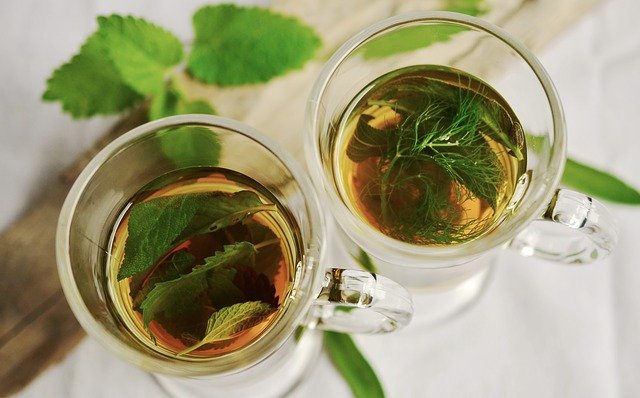
Ingredients:
Leaves of garden and wild plants
cherry, apple, pear, currant, raspberry and others 35.24 oz
1. Collecting leaves. Fermented tea from the leaves of garden and wild plants.
We collect the leaves in dry weather, preferably in the morning. It is advisable to choose plants that are in the shade. The leaves of such plants are more juicy, and the fermentation process will be better. But if the leaves are dirty, it is better to wash them and dry them from moisture.
You can collect leaves for tea throughout the season. In spring, they are very tender, easier to process and ferment. The tea turns out to be delicate, with a subtle aroma. But it is better to collect leaves for tea during the fruiting period of plants, then the leaves, as well as the fruits, will accumulate a lot of useful, flavoring and aromatic substances. In autumn, the leaves are coarse, harder to process and fermented for longer.
And it is more difficult to collect high-quality leaves in autumn – they are damaged by garden pests and diseases.
It is also necessary to take into account that if you collect leaves before the fruit setting period, then the outflow of nutrients for the growth of new leaves, which are necessary for the normal process of photosynthesis, i.e. plant nutrition, will not allow a full-fledged harvest to form.
2. Wilting of leaves
This process is necessary so that the leaves can be processed more easily in the future. In addition, excess moisture in the leaves does not allow for high-quality subsequent fermentation. As a result, the tea will be of poor quality.
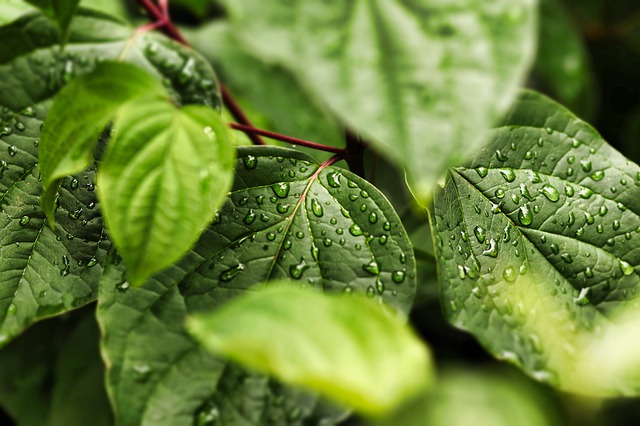
It is impossible to skip this stage, because with the withering of the leaves, reactions begin to occur that partially destroy chlorophyll and other compounds that give the leaf the taste and smell of greenery, essential oils accumulate and other aromatic substances are formed that contribute to the appearance of a pleasant smell.
We lay out the leaves indoors on cotton or linen cloth with a small layer. It is necessary to control the process and periodically stir the leaves so that they are dried evenly. Try not to let the sun’s rays fall on the leaves, otherwise the leaves will dry out, and not wilt. For the same reason, it is impossible to dry the leaves outside, because the sun and wind will quickly dry the leaves, which complicates their processing and will worsen the quality of future tea.
On average, the process takes 12 hours, depending on humidity and air temperature. On a dry sunny day, the process goes faster, on a rainy and cool day – longer (a day or more). A relatively wilted leaf curls better and gives more good teas than an under-dried one. The remaining humidity in the leaf should be 60-62%.
The end of the wilting process is determined by folding the leaf in half. If we feel the “crunch” of the central vein in most of the leaves, then withering should be continued. If most of the leaves do not have a “crunch”, then we move on to the next stage. The end of withering is determined in another way – with a strong compression of a handful of withered leaves, the lump should not open.
If the house is very damp or, conversely, dry, or there is no time to stir the leaves, then you can wilt them in cotton or linen fabric. The fabric for this is desirable to choose as dense and thick as possible (bedspreads, towels, tablecloths, sheets). To do this, distribute the leaves in a thin layer evenly over the fabric, fold it as shown in the photo and twist it as tightly as possible.
The fabric will absorb excess moisture, the leaves will not dry out and will become very pliable for further processing. We check the readiness of the leaves in the same way – by squeezing a handful. If the leaves have not wilted after 5-6 hours, then they can be transferred to another dry cloth and repeat the wrapping process.
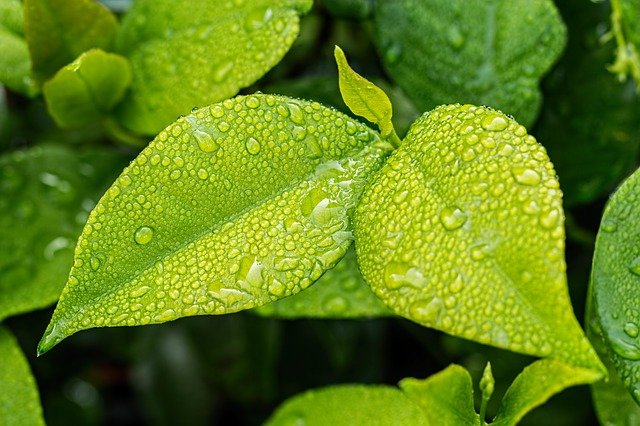
Stronger granules are obtained from the leaves withered in this way, and they are processed easier in a meat grinder. This method is especially suitable for hard leaves.
Immediately after withering, you can freeze the leaves. This is an optional process, but it facilitates further processing of the leaves when preparing them for fermentation. During freezing, cell membranes burst and juice is released, which is what we need. Withered leaves are put in a bag and sent to the freezer for a day or two. The longer the leaves are in the freezer, the easier they will then be processed. The leaves can be stored in the freezer for several months.
When the leaves are completely frozen, they are scattered on the table in a uniform layer, thawed for a short time and prepared for fermentation by one of the following methods.
3. Preparation of leaves for fermentation. Fermented tea from the leaves of garden and wild plants.
At this stage, it is necessary to destroy the structure of the leaf before the juice is released, which allows the most complete extraction of useful substances from the plant and better fermentation. The juice of the leaves contains enzymes, i.e. substances directly responsible for fermentation. If the juice is not enough, then the fermentation will not be of high quality, which will affect the taste and aroma of tea.
There are several ways to destroy the structure of the leaves.
3.1. The first method is twisting the leaves manually. Take a few leaves (7 – 10), roll them with effort several times between the palms until the leaves darken from the protruding juice. As a result , medium rolls are formed . In the future, the rolls are cut and a small-leaved tea is obtained.

3.2. The second method is kneading-crushing the leaves.
This method is similar to the process of manually kneading dough. With vigorous squeezing movements, the leaves are “kneaded” in a deep and wide bowl for 15-20 minutes (you can directly on the table). As a result, the structure of the leaves is destroyed and the juice is released. During kneading, it is necessary to periodically loosen the lumps and separate the stuck leaves. In the future, large-leaved tea is obtained from such leaves. One drawback of such tea is that in its finished form it turns out to be very voluminous and takes up a lot of storage space.
3.3. The third method is twisting the leaves on a meat grinder (a grate with large holes). Periodically let the meat grinder cool down. Depending on the number of leaves, it takes 10 – 15 minutes. The result is granulated tea.
4. Fermentation of leaves
The properties of tea – the taste, aroma and benefits of the drink – depend on the quality of this process. Fermentation begins with the destruction of cells and the release of juice on the surface of the leaf. Enzymes provide a continuous chain of transformations: the product formed by one enzyme is the object of action for another group of enzymes.
If one of any enzymes is turned off in the chain of these transformations (due to unsuitable conditions), the processes are suspended or not brought to the desired level, which negatively affects the final result. Therefore, it is important to create the right conditions for fermentation – a sufficient volume of the fermented mass, temperature and humidity.
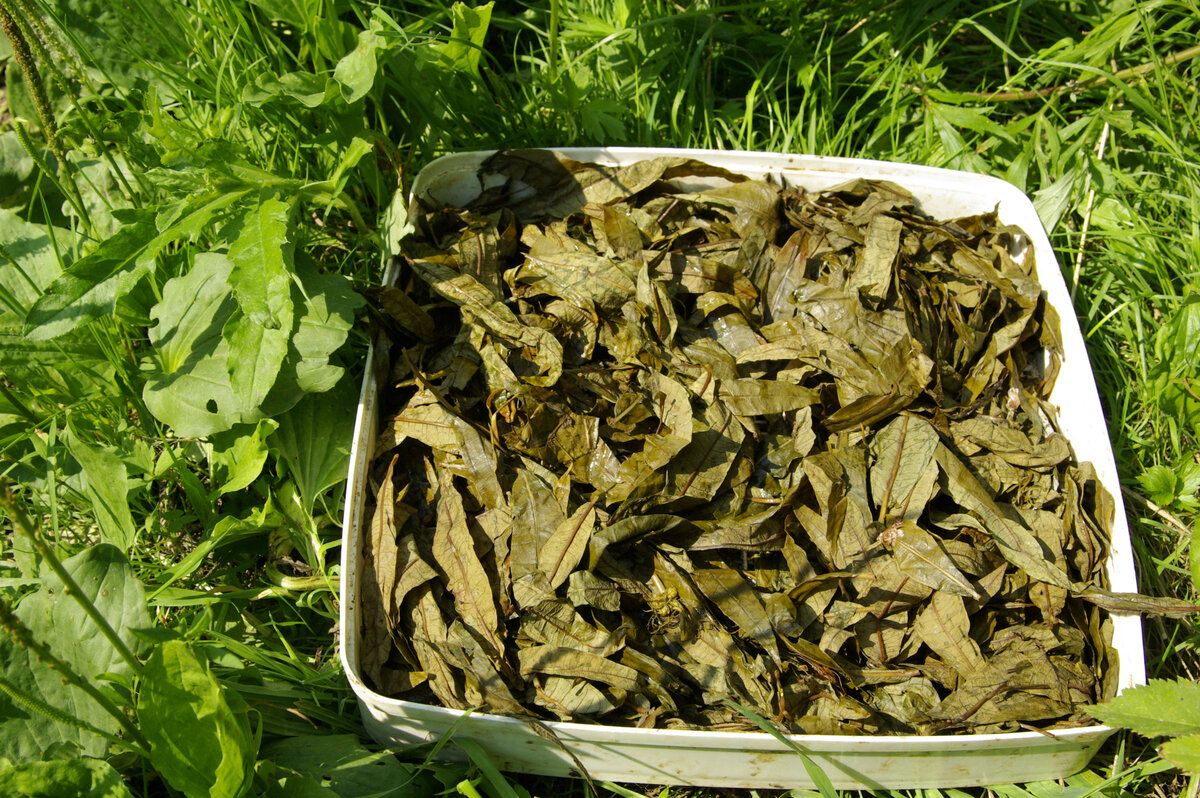
The leaves prepared by one of the above methods are laid in a layer in an enameled or plastic container. With a small number of leaves, fermentation will not take place qualitatively. Therefore, a sufficient number of leaves should be collected for the tea party.
If the leaves were twisted in a meat grinder, then we press them a little with our hand.
If the leaves are twisted into rolls or kneaded, then we put pressure on them. We close it with a damp linen or cotton cloth and put it in a warm place for fermentation. Periodically check if the fabric is dry. If it is dry, then we moisten it again. If the room is dry, then we close the container not only with a cloth, but also with a lid, making a small gap for air access.
Fermentation of the leaves of garden plants takes an average of 6-8 hours, depending on the temperature. The smell of the mass does not change dramatically during fermentation. It just gets stronger and acquires interesting notes – each plant has its own. It is important to “catch” the strongest smell (with experience it will be easy).
This moment will signal the end of fermentation. With further fermentation, the smell will weaken, and the tea may turn out with a less strong aroma. It is important not to overexpose the leaves during fermentation, so as not to lose this flavor.
5. Drying tea
If the leaves were twisted or kneaded before fermentation, then they need to be cut. As a result, we will get leaf tea. The smaller the rolls are cut, the thinner the tea leaves will be.
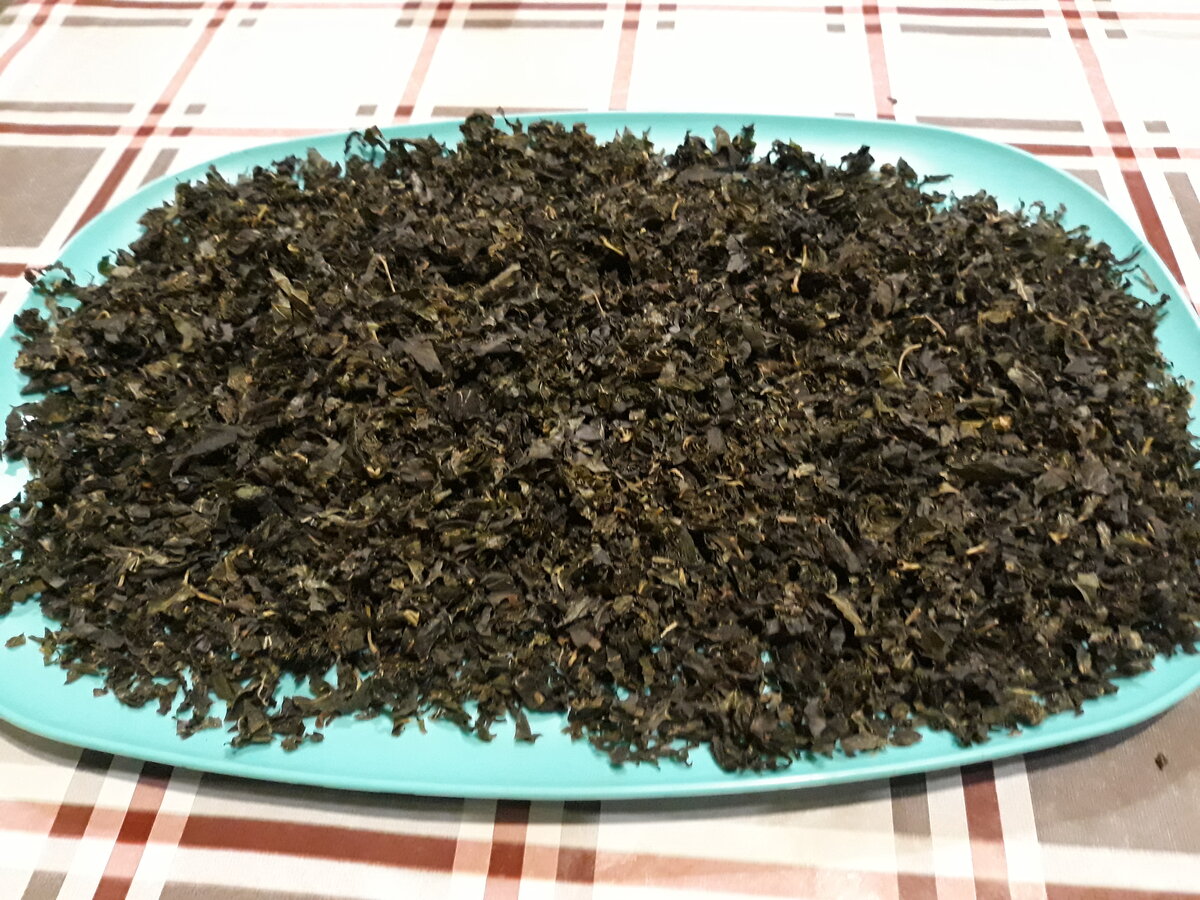
The mixed tea can not be cut, then we will get a large-leaf tea. But it will have a very large volume. You can cut the rolls before fermentation. Then the mass will be denser and fermentation will be better. If the leaves were twisted in a meat grinder, we get granulated tea.
The fermented mass is laid out in a thin layer on baking sheets covered with baking paper, and carefully loosened so that there are no lumps.
Dry in the oven with the door ajar for 1 – 1.5 hours at a temperature of 212F. Then we reduce the temperature to 140F and dry the tea until the moisture is removed. The mass on the baking sheets should be constantly stirred with a spatula.
When the main part of the “tea leaves” will break, and not be crushed, then the tea is ready. It is important not to over-dry the tea. Otherwise, it will lose its taste and aroma.
We take the baking sheets out of the oven, let the tea cool to room temperature and pour it into bags made of thin cotton or linen fabric for drying.
Drying the tea until the residual moisture disappears is carried out outdoors in the shade in dry and warm weather or in a room in wet rainy weather. Periodically shake the bag so that the tea dries faster.
Well-dried tea has almost no smell, makes a dry rustling sound if it is shaken in a bag. If the tea emits a strong aroma, then it has not dried yet. The granules of well-dried tea do not crumble and do not crush, but break apart.
It is important to dry the tea well, otherwise it may become moldy during storage. You can dry the tea in small portions in a frying pan – first on medium heat, and after 20 minutes – on low. That’s it, the tea is ready to be sent for storage.
6. Tea storage. Fermented tea from the leaves of garden and wild plants.
The finished tea is stored hermetically sealed in glass jars, in birch bark or metal boxes in a dark, dry place. It is better to let the tea brew for about a month for the so-called dry fermentation. If you try to brew tea immediately after cooking, it may not impress. The longer the tea is stored, the tastier and more fragrant it becomes.
7. Brewing tea. Fermented tea from the leaves of garden and wild plants.
Tea made from fermented leaves is brewed in the same way as our usual tea. Rinse the teapot with boiling water, pour tea into it at the rate of 1-2 teaspoons per glass of boiling water, pour boiling water, close the kettle with a lid and let it brew for 10 minutes. For better brewing, you can cover the kettle with a towel. Then pour the tea into cups without diluting with boiling water, and pour the kettle again and let it brew for 15 minutes. This tea will also turn out delicious and fragrant. Bon Appetit!

